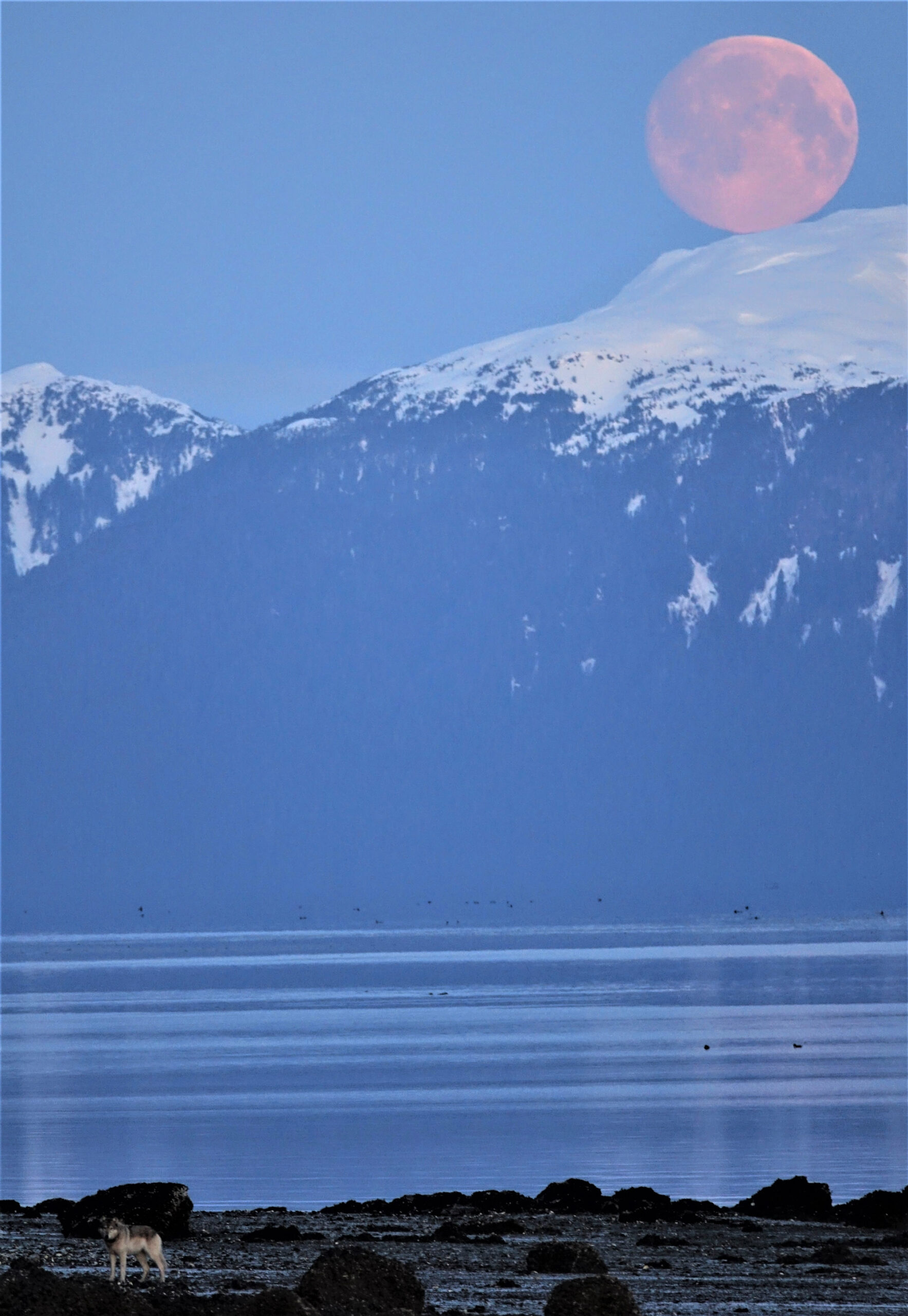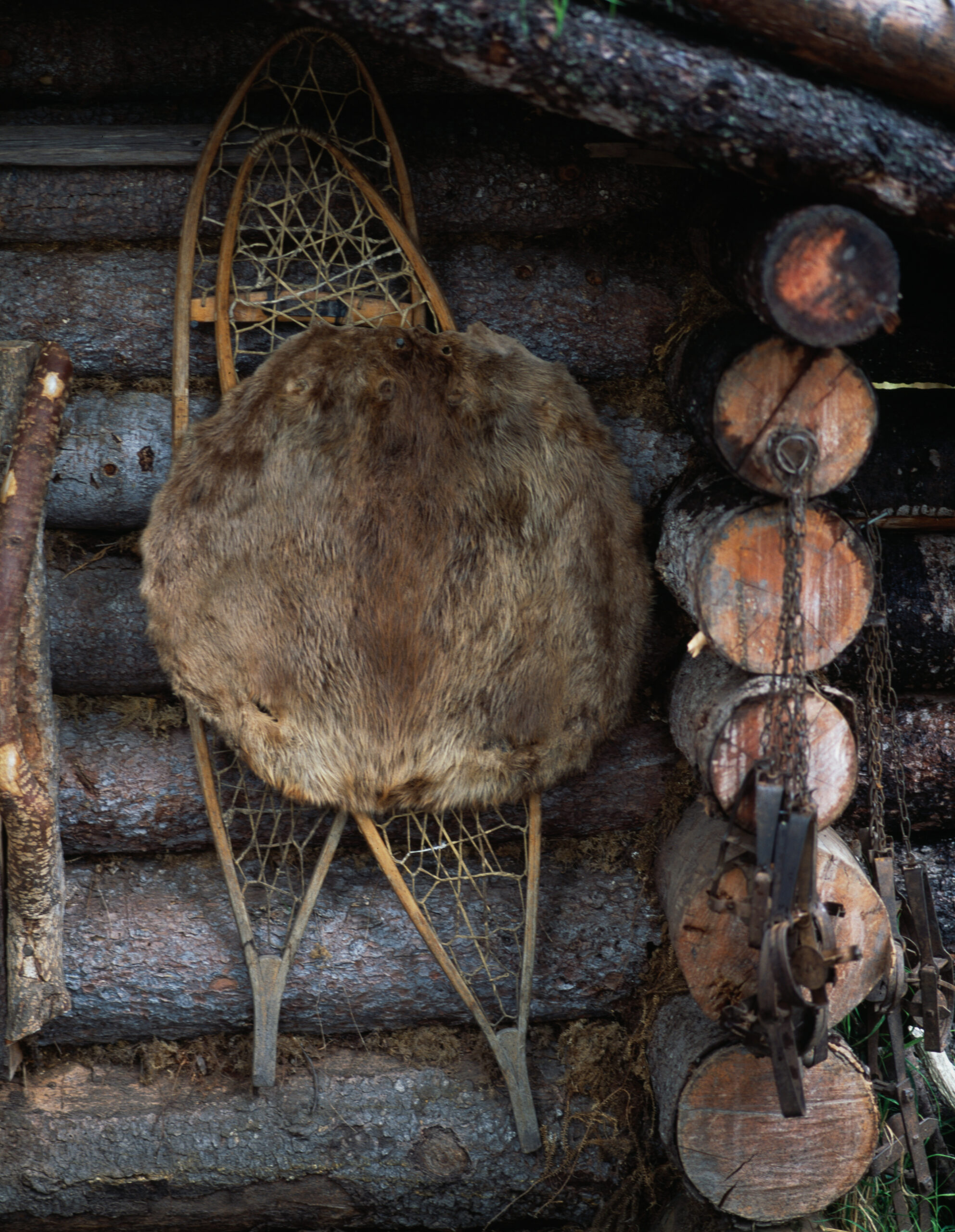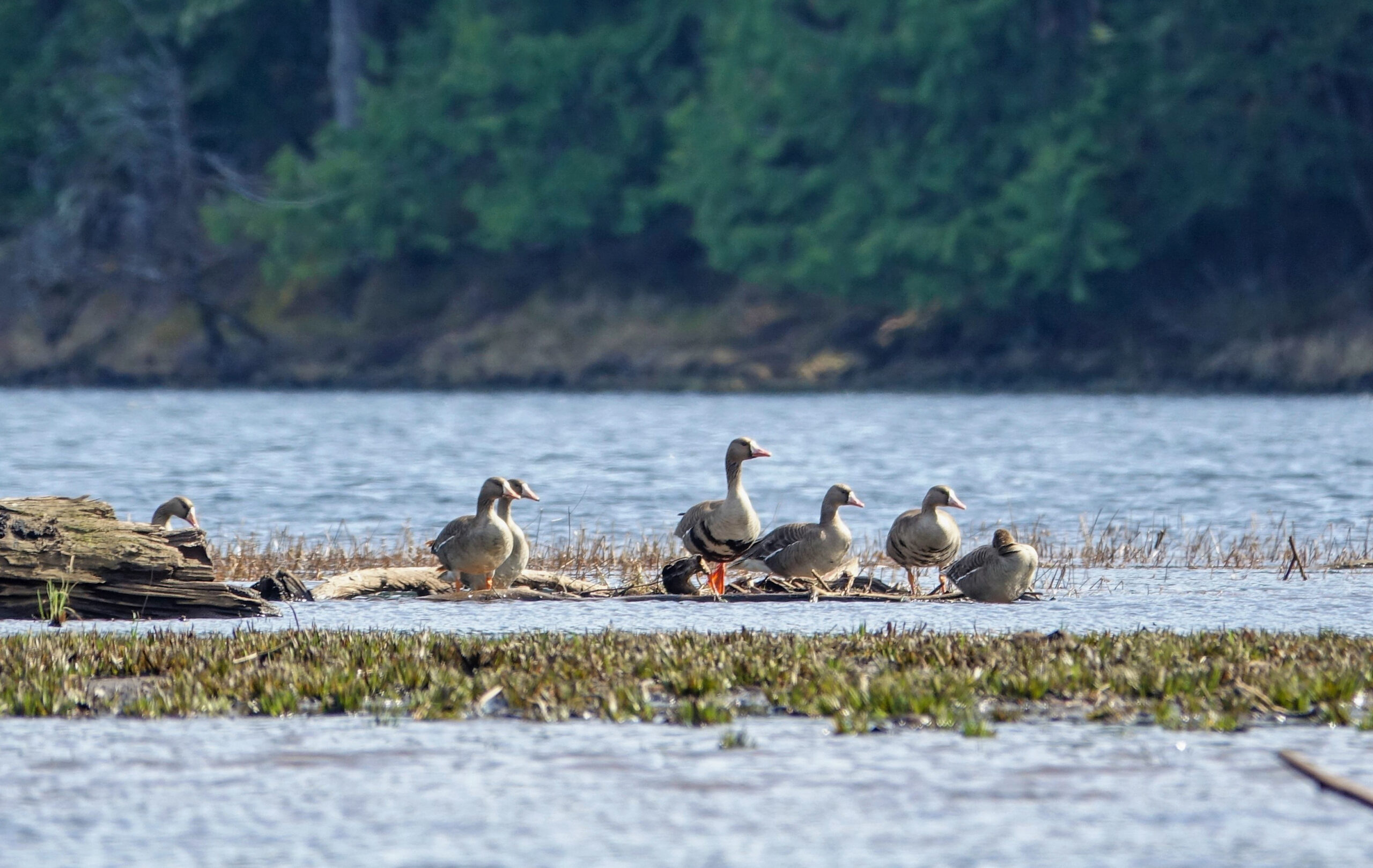DURING THE WINTER of 1939, a woods-wise bachelor named Crist Kolby traveled up the Thorne River on Southeast Alaska’s Prince of Wales Island to trap for the season. He set up his base near the river’s headwaters, at a small shack known as the Hanson cabin that was built by a couple other trappers a few decades before. Kolby hailed from Ketchikan, a bustling logging and fishing community that lay 50 miles away by water. He was around 40 years old, in good health, and considered an expert woodsman. So it was something of a surprise when Kolby failed to return to town the following summer.
That July, authorities sent two men to look for him. Ketchikan game warden W.R. Selfridge detailed the investigation in a 1943 article for the Alaska Sportsman:
“They had found his camp in perfect order, with indications that he left it intending to stay only a day, or possibly overnight. March 2 was the last day marked on the calendar in the Hanson cabin. That must have been the last day Crist Kolby used it.”
The Search Party
It was at the Hanson cabin 80 years later that I first learned of Crist Kolby. A friend and I were hiking and packrafting through the Honker Divide, a 30-mile-long protected corridor that includes the cabin and the Thorne River. We stopped to look around the old building and discovered it had been refurbished at some point. There was a laminated copy of Selfridge’s article hanging on a wall inside.

At the end of October 1939, Selfridge and three of Kolby’s friends departed Ketchikan with a month’s worth of provisions to search for the missing trapper. Selfridge knew the Thorne River country well and led the party. Selfridge admitted his reason for searching for the lost trapper went beyond official duty; he wanted to solve the mystery of how an able man like Kolby could have gone missing. The timing of the expedition was deliberate: Selfridge chose late fall because summer vegetation had dwindled and snow had yet to fall, which would make it easier to find clues of Kolby’s fate. The men lined and poled their boat up the Thorne River in a heavy rainstorm. Despite the weather, Selfridge mentioned how enjoyable the trip would have been if it hadn’t been for their morbid task.
“The forest seems alive with birds and animals, and the water is teeming with fish,” he wrote. “I have never talked with anyone who made the trip up this river who did not mention a wish to make it again.”
When the searchers finally made it to the Hanson cabin, however, they were exhausted, famished, and soaked to the bone. Selfridge shot a buck while the Kolby’s friends made the cabin comfortable for a long stay.
The Thorne River drains from a series of lakes and numerous tributary streams, which, depending on trapping pressure, can be rich with beaver, mink, otter, and wolves. There were a lot more trappers in Alaska in those days, and some of them made fortunes when fur prices were high. Men like Kolby could make good money in a season. Tension and even violence between competing trappers was not uncommon.

That’s one reason Selfridge and the search party initially suspected that Kolby had been murdered for his furs. Little details the searchers normally would not have thought twice about at the cabin—like a possible bullet hole in a piece of wood—took on a potentially sinister significance.
A Dead Man’s Revolver
The four men spent the next several days searching the nearby land and packing a small boat a couple miles through muskeg and forest to Thorne Lake. They would often split up to cover more ground.
On the evening of the sixth day, one of the searchers—a man named W.A. Miller—found the remains of a trapper and reported it to the others. But Miller insisted the dead man wasn’t Kolby. Even more startling, Miller said, the man appeared to have been killed by wolves.
When pressed by his companions about the dead man’s identity, Miller revealed a rusted .357 magnum revolver. He had discovered it—unloaded and holstered—among the scattered clothing and human bones.
“Well, for one thing,” Miller told Selfridge and the others, “I found this gun there, and there was cartridges in the coat pocket. Now, you fellows know that no woodsman like Kolby’s gonna get ganged up on and killed by a bunch of wolves while he had a gun. And this guy was done in by wolves! There’s teeth marks on that gun holster, and they weren’t made by no beaver!”
The men tried to make sense of the possibilities. It sounded far-fetched to them. In that era, wolves were almost unilaterally unliked, but none of the men believed them to be much of a threat. Selfridge admitted they knew of no case of a wolf killing a human in Alaska. Kolby was a paramount woodsman and known to be adequately armed. Certainly, he wouldn’t be the first to meet such an end.
Back at the Hanson cabin, a close friend of Kolby’s, Victor Hautop, cleaned the muck from the pistol and then disassembled it. The mainspring was broken, which had rendered it useless and explained why the trapper had left it unloaded. Worse, Hautop recognized the pistol. It had belonged to Kolby.
Eaten by Wolves
The following morning, the rest of the search party investigated the site of Kolby’s death for themselves.
“By the water’s edge was the coat, torn at the right shoulder, and the cuff of a shirt sleeve,” Selfridge wrote, describing the scene. “The skinning knife, with large tooth marks on the handle, lay nearby, and the bones of one arm were about three feet out of the water. … The clothing, all badly torn, was scattered around under the two trees fifty feet from the shore. The belt was still buckled. From the holster of the belt Miller had removed the gun. … Scattered within a radius of a hundred feet, we found the bones. All but the skull were chewed and broken, and only parts of the larger bones were left.”
The men considered different scenarios and kept returning to the same conclusion: that Kolby had indeed been killed by wolves. Selfridge believed that Kolby had been walking on the frozen lake and, when he realized wolves were coming for him, abandoned his backpack on the ice. This would explain why the search party didn’t find his pack at the scene: It had fallen into the lake during the spring thaw. Kolby must have raced toward shore for a tree to climb.

“But the wolves were too close,” Selfridge writes, re-creating Kolby’s final moments. “One met him at the edge of the ice, and seized his coat by the right shoulder. Crist struck at the murderous beast with his skinning knife, but lost his knife in the struggle. Somehow, too, his coat and the wristband of his shirt were torn off. Desperately, Crist ran for the two trees about fifty feet from the struggle. If he could only make it! Just under one tree, another wolf attacked, and this time its fierce fangs found their mark before the victim could tear away and reach the safety of those low branches! We stood for some time as if watching helplessly while that bloody drama was re-enacted before our eyes. My tongue felt swollen, and ached in my throat as I thought of the panic, the desperate struggle, and the anguish of those few moments before a human soul was sent too soon to its maker!”
Kolby’s story had many similarities with a few other accounts from earlier in the 20th century that told of trappers being killed by wolves. Each case involved the discovery of a trapper’s remains and evidence they had been eaten by wolves. In the case of Ben Cochrane, a trapper in northern Canada, the story of his killing 11 wolves before being torn to shreds himself made numerous newspaper headlines during the spring of 1922. To this day, the Cochrane story is still circulating on the web. Newspapers later reported, however, that Cochrane showed up in Winnipeg in May 1922—very much alive and with no idea where the story had come from. It’s unclear whether the story is completely fabricated or if wolves had killed a different trapper whose identity remains unknown.
Wolf attacks in North America are so rare that for a long time there was a commonly held belief that unless it was rabid, a wild wolf wouldn’t attack a person. This is not true, as evidenced by the 2005 killing of Kenton Carnegie near Points North Landing, Saskatchewan, and the 2010 killing of Candice Berner near Chignik Lake, Alaska. I myself have had dozens of encounters with wolves across Alaska and the Yukon, one of which involved an injured wolf that appeared to be operating under the assumption that if it did not eat me, it would die.

Today, there is a big wolf problem on Prince of Wales. Many people, including numerous biologists, believe the island’s population is a distinct subspecies of wolf that’s in danger of being extirpated. It’s known as the Alexander Archipelago Wolf, and a federal court is currently considering for the third time whether the subspecies should be placed on the endangered species list.
But if you talk to many residents on POW, they’ll call bullshit. There are way too many wolves, they say. Many believe wolves are depleting, and could even eradicate, the island’s deer population, which is vital to the local subsistence lifestyle and hunting economy. The situation is messy and fraught with tension. But one thing everyone seems to agree on is that POW wolves don’t pose any real threat to people.
An Uncertain End
It’s entirely possible that Selfridge’s assessment of Kolby’s death was correct. Still, there are other explanations of how the trapper could have met his end. I was surprised Selfridge did not discuss the possibility that Kolby had fallen through the ice. This would also explain why he had abandoned his pack and why his knife—in an attempt to break ice and claw his way to shore—had been found out of its sheath. Kolby could have made it to shore, only to succumb to hypothermia. A similar scenario happened to two acquaintances of mine—one survived.
Or if he had drowned as he fought his way through the ice, a bear could have easily dragged his corpse out of the water and back into the woods to feed. The area has no shortage of black bears—I saw three when I paddled across Thorne Lake. He could have had a heart attack and his backpack, loaded with freshly skinned pelts or animals, could have been dragged off deep into the woods.
As for the wolves, Kolby had reportedly been carrying a bottle of anise in his jacket, and his clothes would’ve smelled of the animals he’d been skinning. His corpse would have been doubly attractive to wolves and other scavengers. Just because wolves ate him doesn’t mean they killed him.

My buddy and I left the Hanson cabin and paddled a few miles down the Thorne River to a small tributary before setting off into the woods. We encountered numerous deer. Wolf sign was plentiful too, and we found the remains of a couple deer they’d eaten. One had been killed in the last few days and was already reduced to hair and bones. That night we built a fire on the bank above the river. I stayed up late, hoping to hear wolves howling, but there was only the sound of the river flowing by and tree branches swaying in the darkness. I had the feeling we were being watched, and I wondered if our camp would be visited during the night.
I crawled into my sleeping bag thinking about how morbid the search party’s return trip to Ketchikan must have been. I wondered if they got the feeling they were being watched too. Before leaving the country, they had collected their friend’s bones and left a wooden plaque nailed to a tree that read:
IN MEMORY OF CRIST KOLBY
Killed and ate up by wolves in March 1939. Found Nov. 5, 1939.
Read more OL+ stories.

